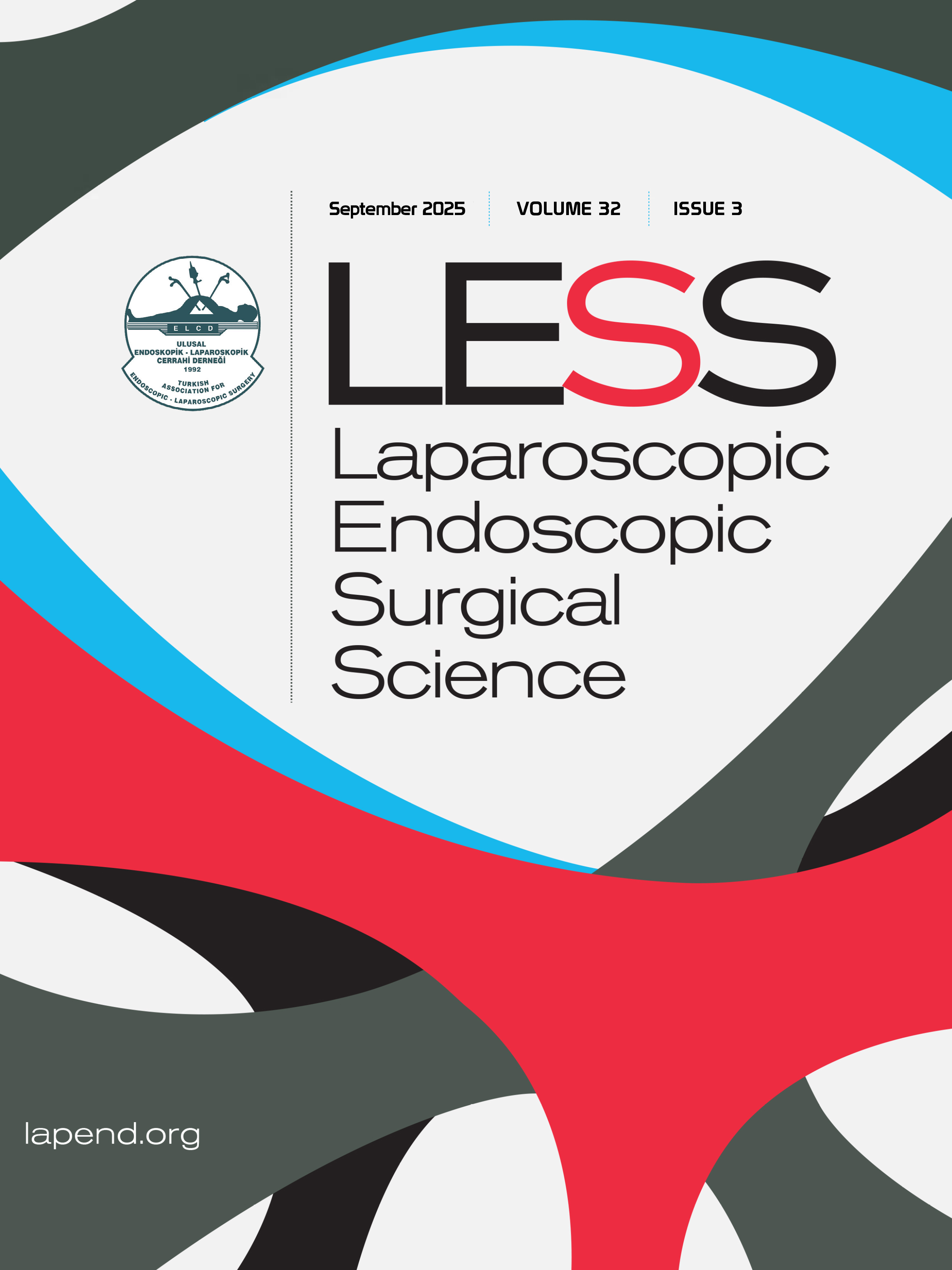A comparison of extracorporeal and intracorporeal anastomosis in patients undergoing laparoscopic right hemicolectomy for right colon tumors
Cem Batuhan Ofluoğlu1, Fırat Mülküt21Department of Gastrointestinal Surgery, University of Health Sciences, Sancaktepe Sehit Prof. Dr. İlhan Varank Training and Research Hospital, Istanbul, Türkiye2Department of General Surgery, University of Health Sciences, Sancaktepe Sehit Prof. Dr. İlhan Varank Training and Research Hospital, Istanbul, Türkiye
INTRODUCTION: Colorectal cancer is a global health concern, and laparoscopic right hemicolectomy is widely performed for right-sided colon tumors. The choice between intracorporeal and extracorporeal anastomosis in laparoscopic right hemicolectomy remains controversial. This study compares early outcomes of these techniques.
METHODS: A retrospective analysis of 61 patients who underwent laparoscopic right hemicolectomy between 2019 and 2024 was conducted. The patients were divided into two groups: intracorporeal anastomosis (n=20) and extracorporeal anastomosis (n=41). The patients were evaluated in terms of their demographic characteristics, perioperative findings, and histopathological results. Statistical significance was defined as p<0.05.
RESULTS: The operative time was significantly shorter in the extracorporeal anastomosis group (181.95±26.88 vs. 200.0±24.17 minutes, p=0.015). Hospital stay duration was similar between groups (6.10±1.14 vs. 6.50±0.89 days, p=0.165). The median number of dissected lymph nodes was comparable (24 vs. 25.5, p=0.742). Surgical site infection rates (12.2% vs. 5.0%, p=0.376), ileus (26.8% vs. 20.0%, p=0.561), and anastomotic leakage (7.3% vs. 5.0%, p=0.731) showed no significant differences. No mortality was observed.
DISCUSSION AND CONCLUSION: Both intracorporeal and extracorporeal anastomosis are safe and effective techniques for laparoscopic right hemicolectomy, with no clear advantage regarding complications or oncological outcomes. The shorter operative time in the extracorporeal anastomosis group may favor its use in certain cases. Further randomized trials are needed to clarify long-term outcomes and support surgical decision-making.
Keywords: Colorectal cancer, extracorporeal anastomosis, intracorporeal anastomosis, laparoscopic right hemicolectomy
Manuscript Language: English















